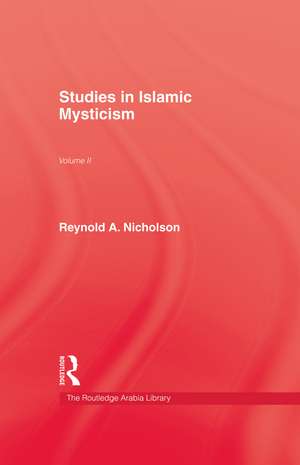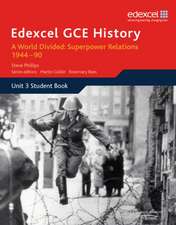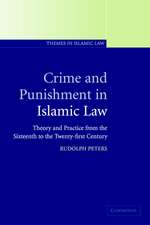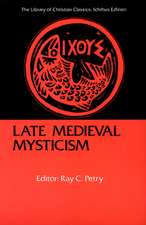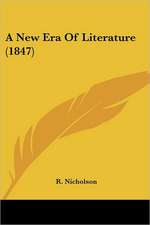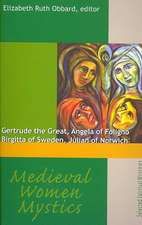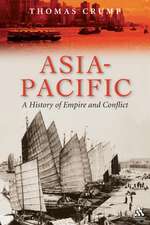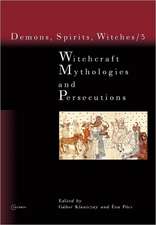Studies in Islamic Mysticism: Volume II
Autor Reynold A. Nicholsonen Limba Engleză Hardback – 8 ian 1998
| Toate formatele și edițiile | Preț | Express |
|---|---|---|
| Paperback (2) | 284.78 lei 43-57 zile | |
| Cambridge University Press – 29 aug 1979 | 284.78 lei 43-57 zile | |
| Taylor & Francis – 9 noi 2001 | 478.77 lei 43-57 zile | |
| Hardback (2) | 1009.21 lei 43-57 zile | |
| Taylor & Francis – 8 ian 1998 | 1009.21 lei 43-57 zile | |
| Taylor & Francis – 20 noi 2017 | 1019.36 lei 43-57 zile |
Preț: 1009.21 lei
Preț vechi: 1230.74 lei
-18% Nou
Puncte Express: 1514
Preț estimativ în valută:
193.11€ • 202.16$ • 159.79£
193.11€ • 202.16$ • 159.79£
Carte tipărită la comandă
Livrare economică 07-21 aprilie
Preluare comenzi: 021 569.72.76
Specificații
ISBN-13: 9780710305787
ISBN-10: 0710305788
Pagini: 296
Dimensiuni: 152 x 229 x 18 mm
Greutate: 0.71 kg
Ediția:Revised edition
Editura: Taylor & Francis
Colecția Routledge
Locul publicării:Oxford, United Kingdom
ISBN-10: 0710305788
Pagini: 296
Dimensiuni: 152 x 229 x 18 mm
Greutate: 0.71 kg
Ediția:Revised edition
Editura: Taylor & Francis
Colecția Routledge
Locul publicării:Oxford, United Kingdom
Cuprins
Chapter 1 Abú Sa‘íd Ibn Abi ’L-Khayr; Chapter 2 1 The title is borrowed from Jílí‘s work, the Insánu’l-kámil, of which a brief but illuminating exposition will be found in Dr Muammad Iqbál’s Development of metaphysics in Persia(London, 1908), p. 150 foll. I may also refer to two articles written by myself: “;A Moslem philosophy of religion” (Muséon, Cambridge, 1915, p. 83 foll.) and “;The úfí doctrine of the Perfect Man” (Quest, 1917, p. 545 foll.); passages from both have been incorporated in this essay, with or without alteration. The following abbreviations are used: K=the edition of the Insánu’l-kámilpublished at Cairo in A.H. 1300; Comm. K=the commentary by Ahmad ibn Muammad al-Madaní on Chapters 50–54 of the Insánu’l-kámil(Loth’s Catalogue of the Arabic manuscripts in the Library of the India Office, No. 667); M=the commentary by Jílí on the 559th Chapter of Ibnu’l-‘Arabí’s Futúátu’l-Makkiyya(Loth’s Catalogue, No. 6931).; Chapter 3 1I have used the following editions and commentaries: Díwánof Ibnu ‘l-Fári, ed. by Rushayyid b. Ghálib al-Dadá (Marseilles, 1853). This contains the minor poems, with a grammatical commentary by asan al-Búríní as well as extracts from the mystical commentary of ‘Abdu’l-Ghaní al-Nábulusí.The Tá ‘iyyatu’l-kubrá, with the commentary of ‘Abdu’l-Razzáq al-Káshání bearing the title Kashfu’l-wujúhi’l-ghurr li-ma‘ání na mi’l-durr(Cairo, A.H. 1319).The Tá‘iyyatu’l-kubrá, with the commentary of al-Nábulusí entitled Kashfu’l-sirri’l-ghámi fi shar Díwán Ibni’l-Fári (MS. in the British Museum, Add. 7564–5 Rich.). The commentary on the Tá ‘iyyabegins at f. 176 of the first volume.The Tá’iyyatu’l-kubrá, ed. with a German verse-translation by Hammer-Purgstall (Vienna, 1854).Concerning the Italian translation of the Tá ‘iyyatu’l-kubráby Sac. Ignazio Di Matteo (Rome, 1917) and the valuable notice of it by Prof. Nallino which appeared in Rivista degli studi orientali, vol. VIII (Rome, 1919), some remarks will be found in the preface to this volume, The abbreviations Díwán, K. and N. refer to (a), (b) and (c) respectively., Michael Angelo;
Descriere
Descriere de la o altă ediție sau format:
A re-issue in paperback of Nicholson's classic survey of the field of Islamic mysticism. Intended as reading for students of sufism, philosophy and literature, also providing an introduction to the translations of both Nicholson and Arberry.
A re-issue in paperback of Nicholson's classic survey of the field of Islamic mysticism. Intended as reading for students of sufism, philosophy and literature, also providing an introduction to the translations of both Nicholson and Arberry.
